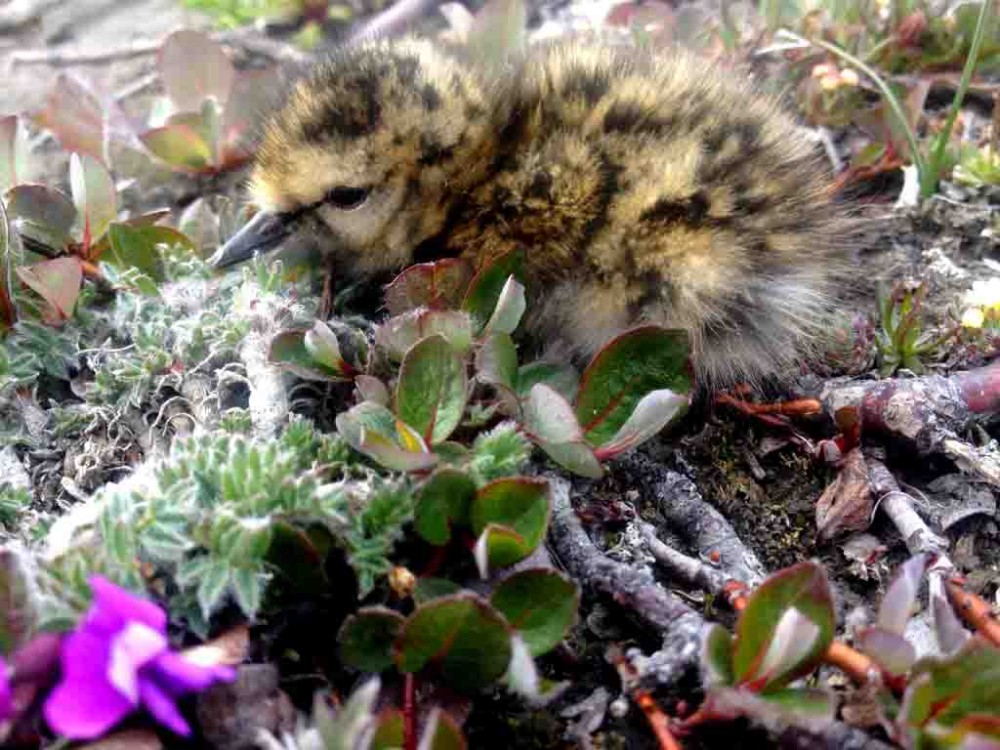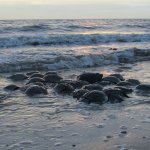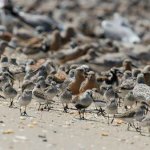Tomorrow is the second Sunday of the month of May, a day known as Mother’s Day in the United States and beyond. In the United States alone, we celebrate millions of people, who serve everyday as mothers, making an untold number of sacrifices for their children.
Note to self: Buy Mother’s Day gift and order flowers pronto
All species have a reproductive strategy that works for them. Humans have a few very helpless and dependent offspring that they invest a great deal of time, energy, and resources into helping them survive and thrive. For humans, the role of Mom and Dad comes in many shapes and sizes, but the one unifying feature is that raising offspring is a lot of work for many years.
Enter the Red Knot
Red Knots are amazing migrants that are most likely flying over the Atlantic Ocean right this minute! Some of them travel as many as 9,000 miles in one direction. It has been said that Red Knots are constantly moving so that they can experience summer in perpetuity. The more scientific explanation, is that one of the reasons is to enhance reproductive success.

Camouflage is key in the Arctic. Can you see the Dunlin? Red Knots are equally camouflaged on the tundra. Photo courtesy of Manomet Shorebird Recovery Program and Arctic Research Teams.
Thousands of soon-to-be Moms and Dads are due to arrive here on the Delaware Bay in just a few days. They will be gorging themselves on horseshoe crab eggs during their stay so they can make the last leg of their trip up to the Arctic where they will disperse, establish territories, and produce offspring during the short Arctic summer. Why don’t they just stay and nest here you ask? Even though there might be plenty to eat, there are also more predators which doesn’t bode well for the youngsters. Instead, the breeding adults flock to a faraway land that has less predators, many hours of sunlight, and much to eat (in the form of insects and spiders).
Once the pairs have been established, the female, or Mom, will lay a clutch of four eggs on ground vegetation, where they will remain for three weeks perfectly camouflaged. Mom has been carefully preparing for the eggs for a while. She has been selecting food high in calcium and storing it in her legs! Mom and Dad share parental duties while the embryos in the eggs are in development.

Not a Red Knot nest, but Semipalmated Sandpiper nest, another Arctic nesting shorebird that relies on horseshoe crabs in migration. Photo courtesy of Manomet Shorebird Recovery Program and Arctic Research Teams.
Red Knots will lay a single clutch of eggs in a season and for a few good reasons. One of the most notable is that this one clutch will cause Mom to lose 60% of her body weight! That’s like going from 140lbs. to 56lbs. in a single day.
Red Knot chicks could be equated to a human toddler. They can kind of do things for themselves, but are still learning how to work their appendages. They hatch with a coat of down feathers and can walk and eat on their own only hours after hatching. They still need adult supervision, but that’s what Dads are for. Yes, that’s right. Pops is the primary caregiver in Red Knot world.

In just a few short weeks, this tiny Ruddy Turnstone chick flew south along with many other juvenile shorebirds, including Red Knots. Photo courtesy of Manomet Shorebird Recovery Program and Arctic Research Teams.
Mom packs her suitcase and says her goodbyes only a few days after her young hatch. It is Dad that stays behind to care for his young, protect them from predators, and supervises flight lessons. He is the reason they survive for those first few weeks in the tundra. Then one day when the young birds are still less then a month old, the adult males depart as well. There, the youngsters remain to feed and strengthen their flight feathers until they too get word that it is time to leave the only place they have ever known and migrate down to South America.
It’s really an incredible and daunting migration, but this strategy has successfully worked for the Red Knot for many years. And even though Mom doesn’t play the conventional role we are used to seeing as humans, she literally gives more than half of herself to ensure the continued existence of her species. It’s not too different from what human Moms do; they give of themselves wholeheartedly in hopes of raising healthy and happy adults.
So to ALL of you moms out there, Happy Mother’s Day!






